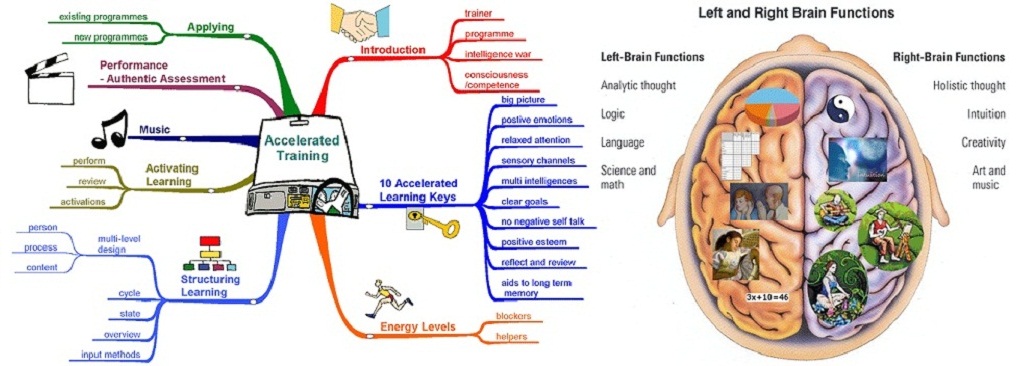The AL Learning Cycle provides a framework for learning design and facilitation. It offers
structure while it maintains AL as an open system that can incorporate the needs of the
group at any given time.
Learner Preparation Phase
Prework/Meaningful AssignmentsPurpose:
To engage learners minds and hearts before they come to the learning. To make learning “real”. |
How?A review of the internal website and key organization-wide themes in preparation for a “world café” discussion and a group presentation to key stakeholders (played by the facilitators) builds group cohesion, starts the graduates thinking prior to the programme and encourages personal accountability. They now begin with a powerful message - it isn’t about just what you know, but about how you demonstrate customer and stakeholder focus. The pre-work becomes a model for the learning itself. |
Welcoming / CenteringPurpose: To create a safe, positive learning
environment (welcoming).
To prepare the learners to “be present” or centered and able to focus on the learning.
Most people’s minds are elsewhere when they come to any learning programme. Activities
at the beginning of each day help learners connect to the learning. |
How? The room design and set-up, the overview of the programme, and the framing of each learning segment creates the right environment for deep learning. (Practice field and buffet metaphor), a demonstration of the intentionality of everything in the programme and the appreciation of diversity.
An activity at the beginning to build community, one each morning to reconnect with one another, the prior day’s learning and focus the group on the upcoming learning: (T-shirt activity, pair share, concentric circles of conversation, etc). |
Connection Phase
Purpose:
Although everything should be motivating,
this particular phase in the cycle is part of a conscious design that allows people to
connect with the learning material at many levels: intellectual, emotional, and at times physical. It makes the most “boring” of subjects come to life. The Connection Phase is also the part of the design that taps into the inner knowing or wisdom of the learner, begins to overcome limiting beliefs and creates an “emotional hook” as some people call it. | How?Some concrete examples:
- Gallery Tour (allow people to walk around a invite each person to note what is important to him/her)
- Guided Imageries (A Leader who Inspired Me, my vision for the future)
- Simulations (to show how quickly we get into a win/lose mindset, to demonstrate team work and learn from it)
- Choose a Card (Find a picture card that demonstrates change, creativity, etc)
- Free associate to “Creativity is…”
|
Creative Presentation Phase
Purpose:
To present new material or allow learners to discover and develop the new information (content/process) in creative, interactive, memorable ways. | How?There are various ways of “presenting” content: Interactive lecture with props, simulation of reality (presentation to stakeholders), world café, DVD to demonstrate best practices of creativity and innovation), model on floor, model on flipcharts, cartoons that illustrate systems thinking principles, etc). |
Activation Phases (Elaboration, Assimilation, Implementation)
Purpose:
In the first Activation Phase, learners begin
to use the new material in controlled and structured activities (games, interactive activities, etc are often used).
As learner competency increases, the
facilitator hands off the baton to the learners and they practice using the material in new, creative and individualized ways,
demonstrating more and more mastery.
The final Activation Phase is a transfer to situations that simulate the reality of the
learner and promote deeper levels of learning and understanding. They move the learner
from knowing to doing and a high level of mastery. | How?Short activities in pairs or teams, small group or whole group activities that are fun, meaningful and the best use of learner’s time make up Activation One.
Role play, skill practice using individual real situations, larger simulations, various practice sessions requiring a higher skill level, application to real situations, synthesis of materials in different ways are typical of Activation Two (Developing concrete actions to support creativity and innovation in the organization, enterprise first attitudes and behaviours, etc, practice in the teams of teamwork and reflection and integration of new learning).
Learners use the material in individual and meaningful ways, play with it, own it and develop a high level of mastery of the concepts and processes. (Use of Systems Thinking tool to analyse a business challenge, planning and implementation of a Senior Leader Engagement Session) |
Integration, Reflection, and Celebration
Purpose:
To bring a module, a day, or the program
itself to a close. To prepare learners to
transfer the learning to their lives.
To bring closure and a sense of
accomplishment and empowerment to a
group and individuals at the end of a
program.
Celebration | How?Creation of Leadership Message, After Action Review of Senior Leader Engagement session, closing each day that includes reflection on the day and feedback to one another and facilitators in a variety of ways on the learning with suggestions for enhancements.
Determine key actions for each of the competencies of the Leadership Framework.
Write and share personal “leadership story”. Sign T-shirts, watch slide show with photos….. |
|
